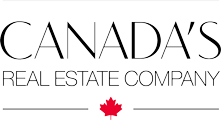The start of a new year is a great time to think about selling your home. The last months of winter will fade before you know it, and spring will arrive. With many buyers beginning to think about a purchase in the early days of spring, now’s the perfect time to start thinking about how you can get your home ready for a sale.

Be prepared for the probability that the next owner of your home is going to want a quality home inspection completed before the transaction. One way to be sure that your home passes the test is to take a look at the structure of your house even before you list it on the market. Some homeowners hire their own inspector to bring attention to any repairs that should be made before they decide to sell their home. Keep in mind that hiring your own inspector is a helpful way to get your house ready, but will not replace a second home inspection that your buyer will likely still require before the sale.
An inspection will ensure that your home is fully ready for the market, and will help you get the best value. But what do you do if you encounter a problem? The best solution is to fix the issue before it gets worse. A little money spent before you begin showing your house to prospective buyers can go a long way to getting your home sold in less time, and for the right price.
Mold is a surprisingly common problem found in Canadian homes, and is unsightly and potentially dangerous to your health. If you find mold when you’re preparing to sell your home, the best course of action is to deal with it right away. Below are six steps to help you determine how to tackle mold when you find it in your home, from Homes and Cottages:
1. Assess the Situation
Find out how much mold you really have. Tear back the carpet, flooring, or wall. If the affected area is less than 30 or 40 square feet, you can likely handle it without calling in a professional. Anything more, and you should start looking for some outside help.
2. Eliminate the Moisture Source
You need to create a dry condition to get rid of the mold and guarantee it won’t be back. Moisture vapour and condensation are hidden sources of trouble.
3. Make Removal Decisions
If you’re tackling the problem on your own, make sure that you’re only removing non-structural materials like drywall, carpet, and ceiling tiles. Always wear a HEPA-rated respirator when removing mold.
4. Dry the Area
Once your mold is gone, use air circulation, heaters, or a dehumidifier to dry out the area. Monitor the relative humidity of the area and allow for ventilation.
5. Kill your Mold
While bleach is commonly used to kill mold, if the mold has been growing beneath the surface of your affected area, the bleach won’t reach deep enough to remove the problem entirely and your mold will grow back. Instead, use non-bleach fungicides that carry Health Canada registration.
6. Prevent Re-Growth
Even using a fungicide is not an automatic guarantee that mold will not return. Do your best to prevent this from happening by keeping moisture levels down, ensuring the area is properly ventilated, watching for new leaks, and monitoring the humidity levels in the area.
Visit the Homes and Cottages website for additional details on what you can do to prevent mold growth and re-growth in your home. Even if you aren’t planning to list your home this year, a healthy home benefits your whole family and every homeowner should have a basic understanding of how to deal with mold.
If you’d like to discuss selling your home, or would like help finding a home inspector, please contact us directly or search our website to find a sales representative who can help you! You can also sign up for a free, no-obligation home evaluation to find out what your home is currently worth.
For regular updates on real estate in and around Ottawa, follow our blog or sign up to have our entries delivered directly to your e-mail inbox.













